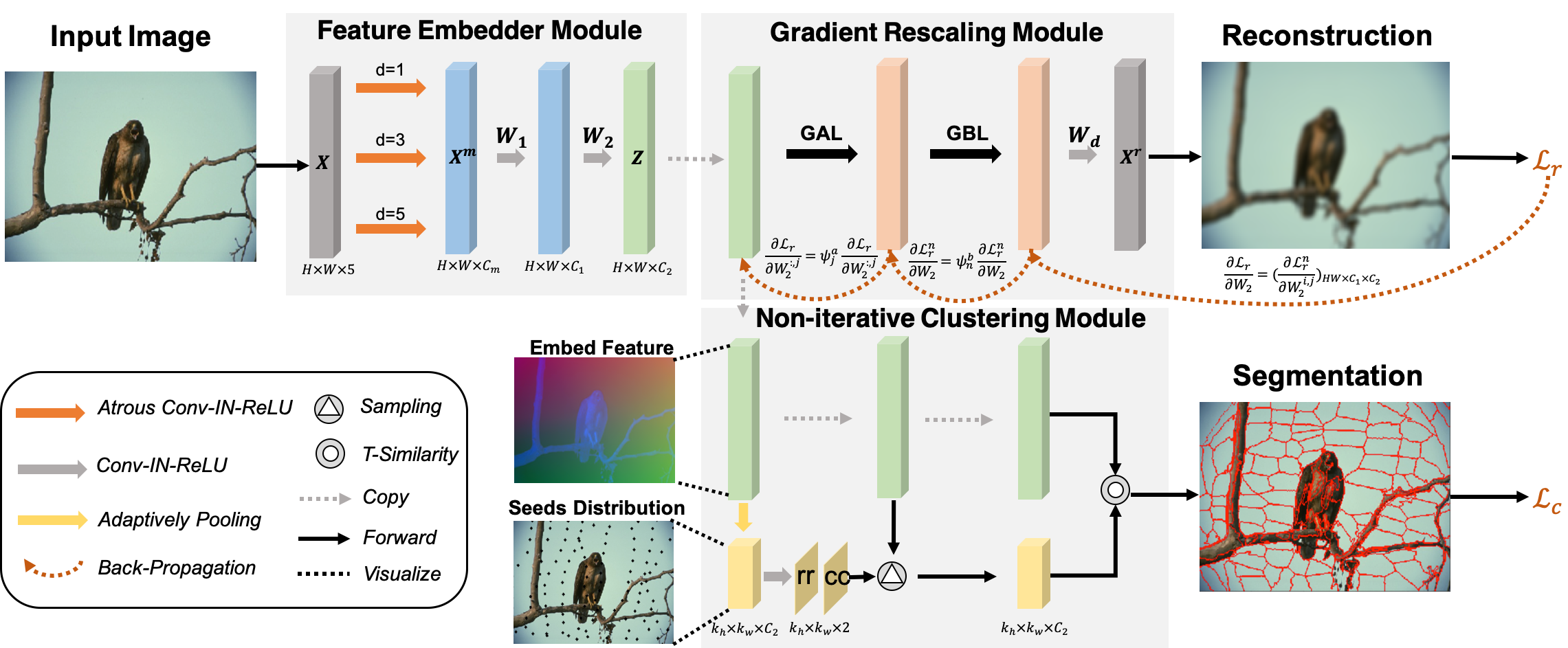Official implementation of Learning the Superpixel in a Non-iterative and Lifelong Manner (CVPR'21)
The proposed LNSNet views superpixel segmentation process of each image as an independent pixel-level clustering task and use lifelong learning strategy to train the superpixel segmentation network for a a series of images.
The structure of proposed LNS-Net shown in Fig. 3 contains three parts:
- Feature Embedder Module (FEM) that embeds the original feature into a cluster-friendly space;
- Non-iteratively Clustering Module (NCM) that assigns the label for pixels with the help of a seed estimation module, which automatically estimates the indexes of seed nodes;
- Gradient Rescaling Module (GRM) that adaptively rescales the gradient for each weight parameter based on the channel and spatial context to avoid catastrophic forgetting for the sequential learning.
Here we only release the model trained on BSDS dataset and corresponding code to utilizes it for superpixel segmentation. The whole training code will be coming soon.
To uese the given model for generate superpixel:
git clone https://github.com/zh460045050/LNSNet
cd LNSNet
sh runDemo.sh
or
python demo.py --n_spix $num_superpixel --img_path $input_img_path --check_path lnsnet_BSDS_checkpoint.pth
The performance and complexity of methods for generating 100 superpixel on BSDS test dataset with image size 481*321:
If you find our work useful in your research, please cite:
@InProceedings{Lei_2021_CVPR,
title = {Learning the Superpixel in a Non-iterative and Lifelong Manner},
author = {Zhu, Lei and She, Qi and Zhang, Bin and Lu, Yanye and Lu, Zhilin and Li, Duo and Hu, Jie},
booktitle = {IEEE/CVF Conference on Computer Vision and Pattern Recognition (CVPR)},
month = {June},
year = {2021}
}


